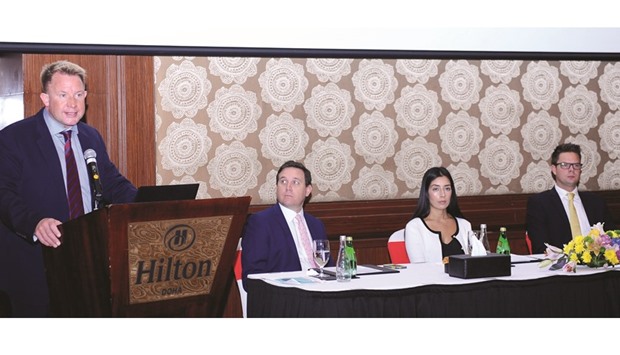Rents of prime residential properties as well as office space fell in the second quarter of 2016, a new report shows.
A softening of rents is also anticipated among mid-range residential units in the third quarter, though such properties did not see much reductions during the second quarter, according to the “Q2 2016 Qatar Market Report” released by global real estate services firm DTZ.
The report said rents in the Grade A office market have dropped between 10% and 15% since the start of 2016, while vacancy of prime offices in West Bay has increased by approximately 5% over the last six months. This results in “opportunities for tenants with lease events to negotiate advantageous terms”, it stressed.
Office supply in West Bay stood at almost 1.7mn sq m, with approximately 0.25mn sq m currently available to lease. By 2017, the report said it was estimated that a further 385,000sq m would be added to the Grade A office market.
“Demand for office accommodation in Q2 2016 was almost exclusively drawn from the private sector, with many companies looking to relocate within Doha to take advantage of falling rents,” DTZ said.
The report observed that there had been an increase in activity in the second quarter as the more favourable lease terms of offer provided opportunities for tenants to either renegotiate advantageous terms with their existing landlord on renewal, or to secure new accommodation at reduced rents.
“While the population of Qatar increased by some 9% over the past 12 months, the vast majority of new arrivals has been made up of construction workers,” DTZ said. This has kept the tertiary sector buoyant, but demand for prime and mid-range residential accommodation has fallen due to the departure of many white-collar workers from the country due to redundancy programmes in some sectors, the report stressed.
The residential market, on the other hand, has seen increasing incentives, most notably in prime apartments and villas in compounds, the report said. It noted that prime residential apartment rents have typically fallen by 5% to 10% within the past year.
Johnny Archer, DTZ associate director, consulting and research, said: “There were signs of falling rent in the residential sector in Q2. Many prime apartments saw rent fall by QR1,000-1,500, while rents of many villas fell by up to QR2,000-3,000 per month,” he said, adding that vacancy rates for prime residential property of between 5% and 10% were now common.
On the other hand, Archer said rents for mid-range units did not experience the same discounts in rent. “Rental reductions were less evident for mid-range apartments and villas in the second quarter. However, increasing vacancy and new supply indicates there may be a softening in rents in Q3,” he said.
According to the report, the new supply is likely in places such as Bin Mahmoud and Al Mansoura.
Prime residential apartment supply is also expected to increase significantly over the coming year, with more than 3,000 new units nearing completion in West Bay and The Pearl-Qatar, according to the report, which added that it is likely that fresh supply will see rents continue to soften, reversing the trend of high increases experienced between 2011 and 2015.
Also, there has been a continued fall in the demand for corporate residential lettings for apartment blocks and compounds with more companies now preferring to provide rental allowances rather than paying for employee accommodation, DTZ said.
Mark Proudley, director of consultancy and research at DTZ, said: “The current rental softening reflects market-driven supply and demand and provides some relief to occupiers from rents, which have been rising year on year since 2010.”

DTZ Qatar general manager Edd Brookes speaks during the launch of the u201cQ2 2016 Qatar Market Reportu201d.



